Skip Bayless Delivers Brutally Honest Take on Caitlin Clark’s Historic Shooting Slump
The Indiana Fever’s golden girl Caitlin Clark, who once dazzled audiences with her seemingly effortless three-point shooting during her stellar Iowa career, now finds herself trapped in what can only be described as the most devastating shooting slump in recent WNBA memory. After delivering a career-defining performance against the New York Liberty on June 1st, where she erupted for 25 points in the first half alone and finished with 32 points on an impressive 7/14 three-point shooting display, Clark appeared to be finding her professional rhythm in the league’s unforgiving landscape.
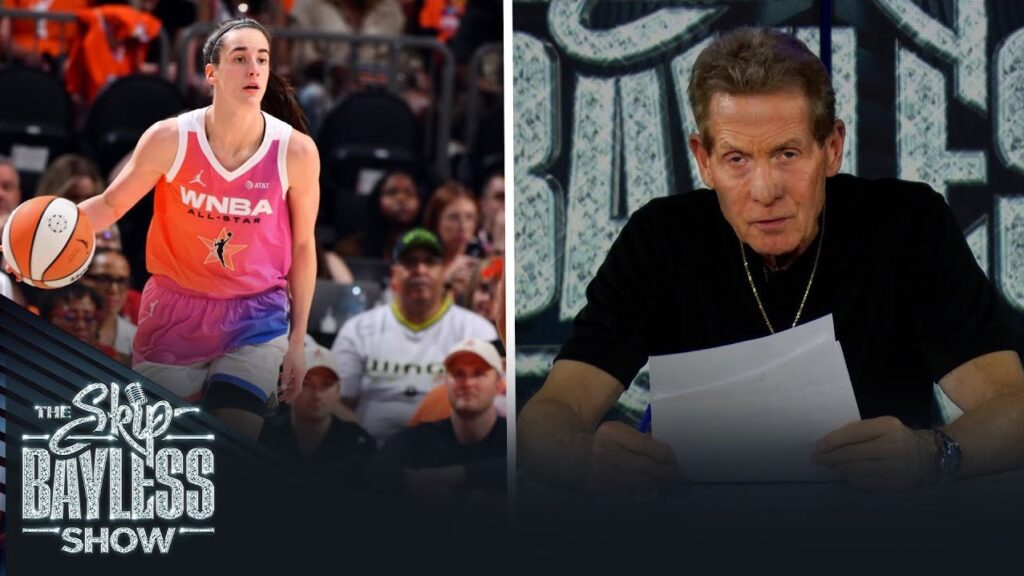
Her momentum continued with a solid 4/6 three-point performance against the Connecticut Sun, suggesting that the former Iowa superstar was finally adapting to the professional level after initial struggles that had skeptics questioning whether her college success would translate to the WNBA’s elite competition. However, what followed has been nothing short of a catastrophic collapse that has left fans, analysts, and even her most ardent supporters scratching their heads in bewilderment and growing concern.
Over her last three games before missing action due to a groin injury, Clark has managed to connect on just one three-pointer out of 23 attempts, a shooting percentage so abysmal that it has officially entered the record books as the worst three-point shooting stretch in WNBA history. This unprecedented slump has transformed the once-confident rookie into a player who appears increasingly tentative with each missed shot, as the weight of expectations and the mounting pressure of professional basketball begin to take their visible toll on her psyche and performance.
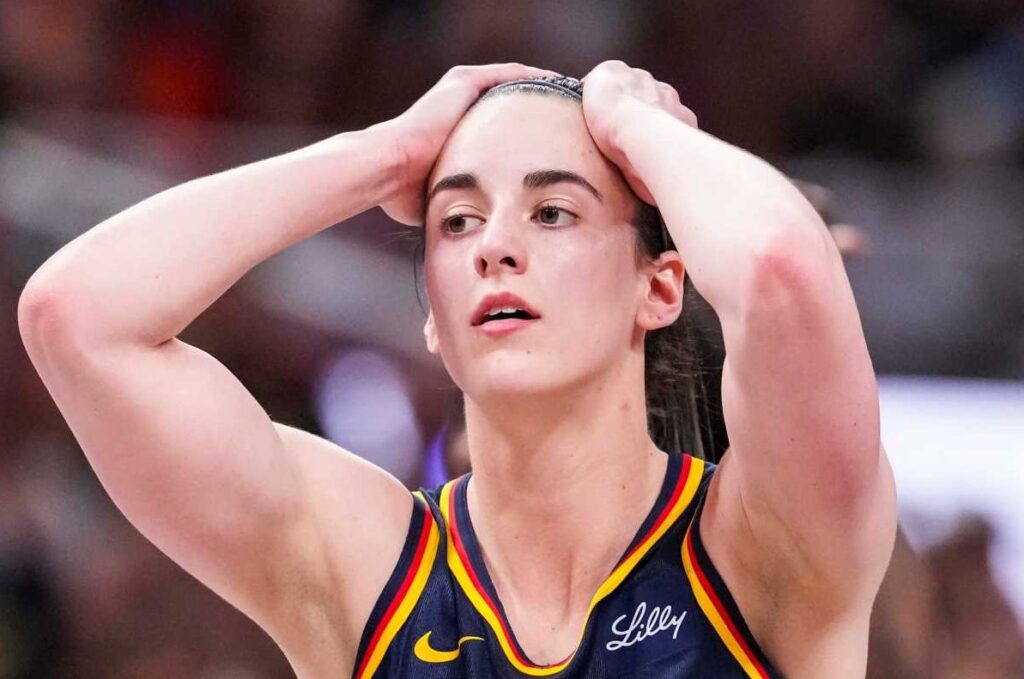
Skip Bayless, the polarizing sports media personality who has been one of Clark’s most vocal champions since her dominant days terrorizing Big Ten defenses at Iowa, found himself in the uncomfortable position of having to acknowledge the harsh reality of his favorite player’s struggles. During his Friday broadcast, Bayless delivered what he called a “painfully honest” assessment of Clark’s current predicament, admitting that even the most dedicated supporters must confront the statistical evidence that something is fundamentally wrong with the rookie’s shooting mechanics or mental approach to the game.
“I’ve raved and raved and raved about her, but now I’ve got to be honest,” Bayless stated with visible reluctance, his usual enthusiastic tone replaced by a more somber delivery that reflected the gravity of Clark’s situation. “She is officially into a deep, deep three-point shooting slump that has reached historic proportions, and it’s becoming increasingly difficult to watch a player of her caliber struggle with such basic fundamentals that once came so naturally to her during her college dominance.”
\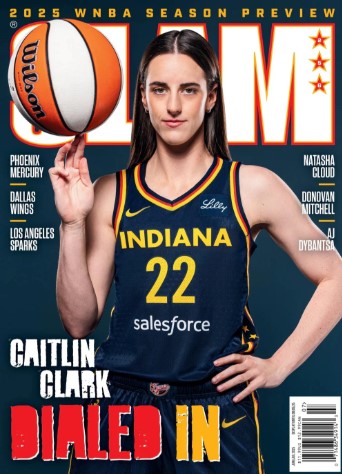
The numbers paint an even more disturbing picture when examined in the broader context of WNBA three-point shooting, as Clark has plummeted to a shocking 55th place out of 61 qualified three-point shooters league-wide, with her 29.5% shooting percentage representing a dramatic fall from grace for someone who built her reputation on long-range accuracy. Bayless didn’t mince words when describing this statistical reality, calling it “horrendously bad” and expressing genuine concern about whether this represents a temporary adjustment period or a more fundamental problem with Clark’s ability to translate her college success to the professional level.
While Clark continues to demonstrate her exceptional court vision and playmaking ability by leading the league in assists per game, a category where her Iowa experience clearly translates effectively to the professional game, she has simultaneously become the league’s turnover leader with five more total turnovers than Chicago Sky rookie Angel Reese, who sits in second place. This dual reality of exceptional playmaking paired with careless ball-handling has created a frustrating paradox for Indiana Fever fans who expected their franchise player to provide immediate stability and leadership rather than the current mixture of brilliance and bewildering mistakes.
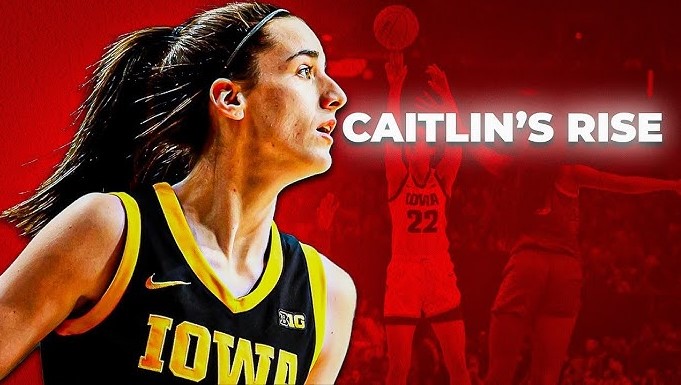
The timing of Clark’s struggles couldn’t be worse for an Indiana Fever team that sits at 7-8, occupying ninth place in the competitive WNBA standings and desperately needing their star rookie to regain her shooting confidence before the season slips away from their playoff aspirations. Her recent groin injury, which forced her to miss games against the Los Angeles Sparks and Dallas Wings, has only added another layer of concern for a franchise that invested heavily in Clark’s potential to transform their organizational culture and competitive prospects.
Head coach Stephanie White provided a cautious update on Clark’s injury status, describing her condition as “very much a day-to-day thing” while emphasizing the team’s commitment to proper medical protocols rather than rushing their franchise cornerstone back before she’s physically ready to perform at full capacity. The delicate balance between managing Clark’s health and maintaining team competitiveness has become a central challenge for the Fever coaching staff, who must navigate the pressure of immediate results while protecting their long-term investment in Clark’s development and well-being.
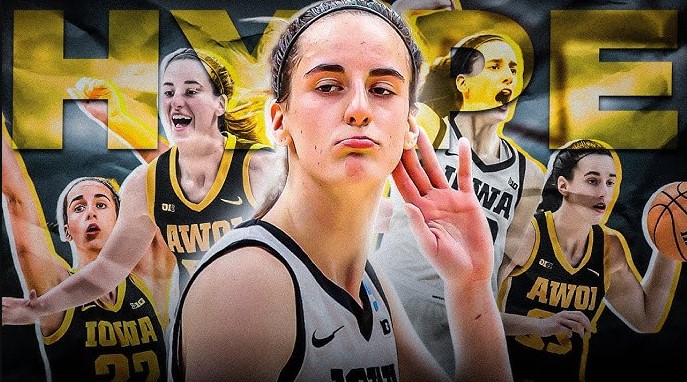
Despite her on-court struggles and mounting injury concerns, Clark remains the leading vote-getter for the upcoming WNBA All-Star game, a testament to her enduring popularity and the faith that fans continue to place in her eventual return to elite form. Bayless concluded his analysis with a philosophical observation about the nature of shooting slumps, noting that “great shooters don’t typically go through these kinds of prolonged slumps,” while expressing hope that veteran players who previously criticized Clark would show support during her difficult period rather than taking satisfaction in her current struggles.
The coming weeks will prove crucial in determining whether Caitlin Clark can overcome this historic slump and reclaim her status as one of basketball’s most dynamic offensive threats, or whether this represents a more permanent adjustment to the professional game’s increased difficulty and defensive sophistication.